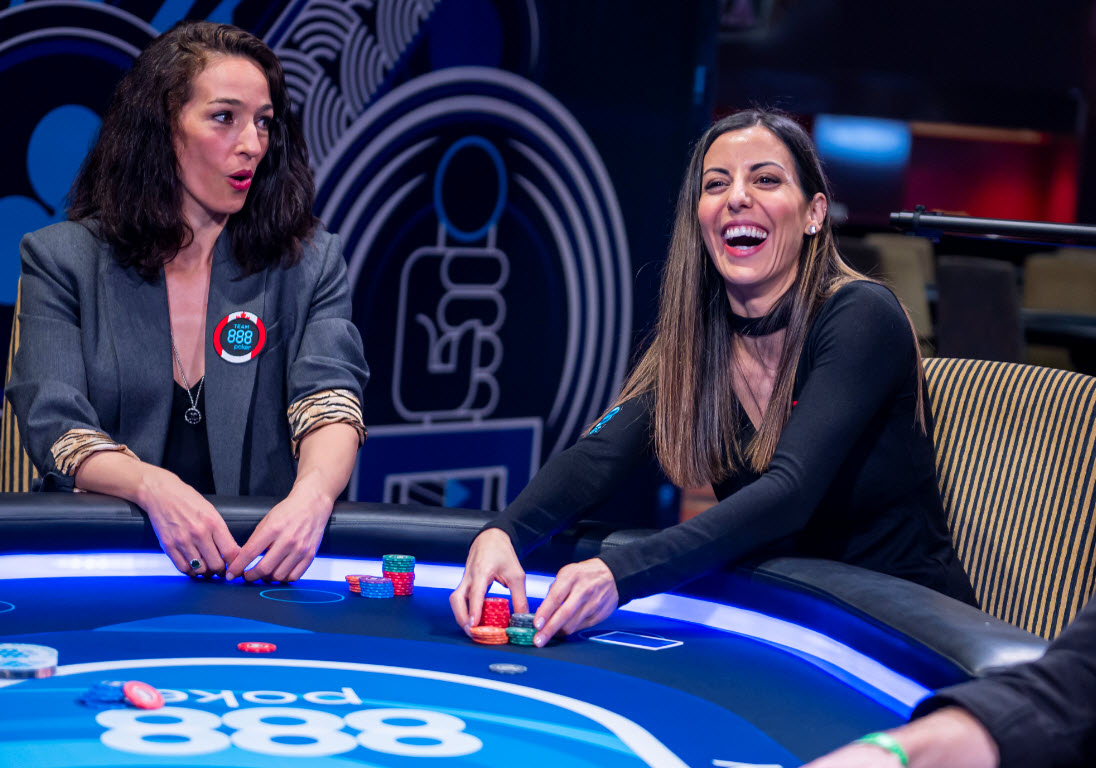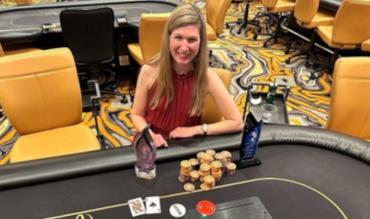We spoke with AJ Rudolph, Director of Education for the women’s group Poker Power and Vice President of the Women's Poker Association.
Find out her thoughts on what it’s like to teach women how to play poker!
*Interview has been edited and condensed for clarity.
Going from Virtual Classes to Live Poker Tables
Amanda: Poker Power’s primary mission is to teach women how to play poker. What surprised you most about teaching these classes?
AJ: Oh, that's a great question. Honestly, I think the biggest thing that has surprised me is going back to what it’s like playing when you first started.
Think about all those things that were big hurdles for you. Now, granted, when I started playing, I started playing in person. So that was never a hurdle for me.
But the biggest surprise for me is that because most of our teaching has been done virtually and online, the biggest hurdle for women to get over is to play poker live.
Not that they ever have to. But just getting over that hump has proven to be much more difficult than we expected.
Amanda: How so?
AJ: Things you have to do when you're playing live that are very different – even just calculating the pot, right? The app is going to tell you how much is in the pot.
But if you look at the pot when you're playing live, you're like, “Oh, wait! Okay... So, there were how many people again? Let me add that up.”
Once we get women to play in person, it's such a rewarding experience for them. You hear them say it was awesome and so much fun, including little details like listening to the sound of the chips in the room.
But it really was surprising to me how hard it is to get women to want to play live.
Women Poker Players and Stereotypes
Amanda: There are a lot of stereotypes surrounding not just women and poker but poker players in general - from how old you are to how you dress.
What are your thoughts there? Do you believe we need that for the reads, or do you focus on defying stereotypes?
AJ: It is fascinating. People always stereotype at the table. I try not to. People will say things like –
- “Oh, well, there's the old guy over there, so he's going to be nitty”, and you know that sort of thing.
- “Or the woman's never going to take risks. The woman's not going to bluff. The woman's not going to do whatever.”
I find it interesting in our classes. We have done some mixed-gender classes, and one of the things that is said about women is that we don't take risks. Or we don't take enough risks.
There are always exceptions to the rule. But when I see some of these mixed-gender groups, I see the men being so much more willing to take risks and the women being so much less willing to take risks. That’s where our training comes in.
We push women to go outside their comfort zone and take on more aggressive actions.

The Fear of Bluffing…
Amanda: Risk aversion is one of the most significant differences in these mixed-gender groups. Is there anything else that you notice?
AJ: Women seem to fear bluffing because they think of it as lying and don’t want to be thought of that way. They think we’re teaching them to lie.
In the game of life, you have to look for winning opportunities. Undoubtedly, you're not telling everything – but that's OK.
Men withhold information all the time in negotiation situations. You don't show all your cards. You shouldn’t.
You are withholding that information to make a winning opportunity for yourself. That's okay to do. And that's how life is played.
Is Age Just a Number?
Amanda: Poker Power has experimented with teaching various ages and women from different backgrounds within the demographic.
What differences have you noticed based on age, career, etc.?
AJ: Specifically, age differences stand out most to me. We find that the younger groups could benefit from what we teach and the skills because they're early in their career.
But if you haven't been in the corporate environment, you haven't seen some of the discrepancies, disparities, and challenges you face.
It's hard to know why you need the training.
These younger women haven't worked in the workplace. So, they don't understand. It sticks with women who are already in their careers. It resonates deeper with them.
Getting Comfortable with Cold Hard Cash!
Amanda: Whether it's a tournament or a cash game, is it essential for women to manoeuvre with real money?
AJ: You can learn a lot without it. It also takes it to a whole new level when you physically put something on the line.
If you're a professional poker player, you expect to win only 20% of tournaments. Yes, you're going to lose a lot of the time. And so, you have to be okay with that. It builds resilience.
It takes it to a whole new level to play for money, even something like twenty bucks. Then it becomes a capital allocation game.
Many women don't have control of their finances or don't pay enough attention to them. Poker is like trading. You're handed a pile of chips and have to try to build that chip stack up!
- You're going to lose some.
- You're going to gain some.
- But you have to take the right types of risks!
AJ won first place in the Women in Poker Hall of Fame Bounty Tournament at Resorts World, Las Vegas, on December 14th, 2022.


